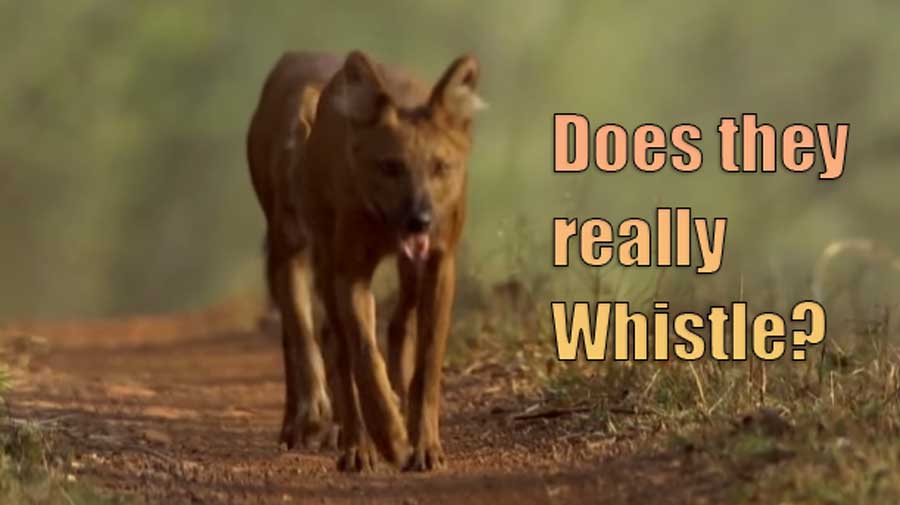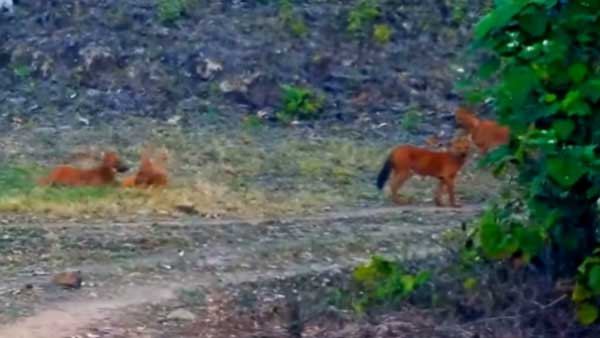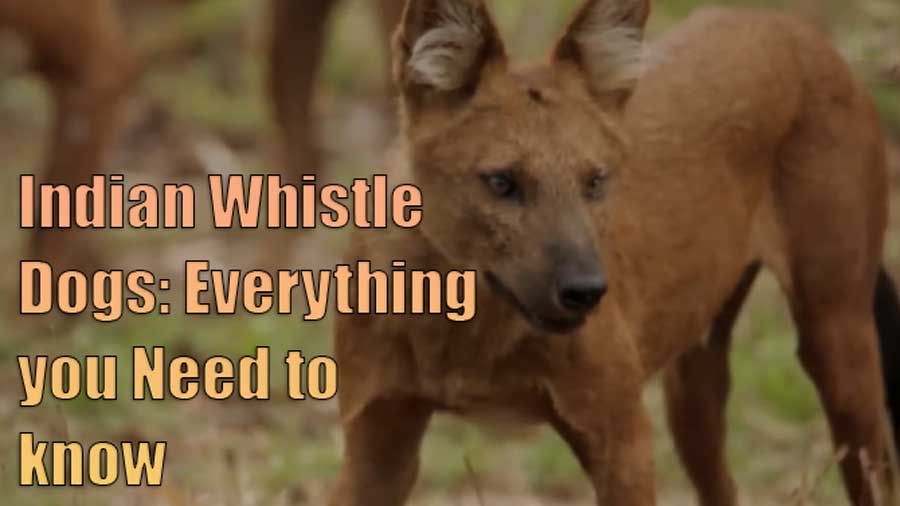The Indian whistling dog. You probably have heard the name on social media but do you know what is it? Recently going viral on the Internet, this dog breed is actually known as Dhole. However, this animal is not exactly what you think. So, to clear your all misconceptions, I am going to share all the valid information and facts about this Indian Whistling dog. So have a good read on this topic Indian Whistling Dog: Everything You Need to Know.
Scientifically known as Cuon alpinus, is a fascinating and distinctive species that goes by various names, including dhole, Asiatic wild dog, and Indian whistling dog, etc(Wikipedia).
Becoming viral for its unique vocalization, which resembles a whistle rather than the typical barking associated with canines, the Dhole is a social and highly adaptive predator.
In this article, we will delve into various aspects of this unique animal, and explore its characteristics, behavior, habitat, social media myths, and facts, and the challenges it faces in the wild
Indian Whistling Dog: Does it really whistle?

Starting with the common misconception that the Indian whistling dog produces a true whistle sound. The name “whistling dog” can be a bit misleading. The vocalization of the Dhole is not a high-pitched whistle like a human-generated sound but is instead a unique vocalization that has been described as a whistle-like sound.
You can relate it to domestic dogs that also make whistle-like sounds when they are most likely crying, happy for someone they know. Mostly they make this kind of sound when making a request to their owner.
Dhole’s Whistling Sound| Facts
The sound produced by dholes is a result of their anatomy and the structure of their vocal apparatus.
Dholes have a special ligament in their voice box, or larynx, that allows them to produce a distinctive and high-pitched vocalization. This sound is often compared to a whistle, leading to the colloquial name “whistling dog.”
It’s important to note that the sound is not akin to the deliberate, controlled whistling humans do. They just want to bark with the same pattern and it sounds like whistling every time because of their voice box structure.
Dholes can also make different sounds like whines, mews, yaps, squeaks, screams, growls, growl barks, and chatter calls. These are short messages between dholes. (Source)
They also do a “huu-huu” type call, similar to African-painted dogs.
When they need to communicate over long distances, like calling the pack after a hunt or waking them up from mid-day naps, they make a whistle. This whistle is why they are sometimes called “the whistling dog.”
Know More About Dhole: The Whistling Dog
Physical Characteristics
The dhole is a medium-sized canid with a slender, elongated body and distinctive reddish-brown to sandy-yellow fur. It has a bushy tail and rounded ears, and the Indian whistling dog possesses a set of sharp teeth adapted for hunting and tearing apart prey. Adult dholes typically weigh between 10 to 20 kilograms, with a shoulder height ranging from 40 to 50 centimeters.
That would be the size of a border collie. Males are bigger than the females.
Habitat and Range

Dholes are primarily found in diverse habitats across Asia. Its main locations are from the dense forests and grasslands to alpine regions. According to historical events they are found in India and China, Southeast Asia, and Russia.
Because of the loss of their natural habitats and conflicts with humans, the dhole population has decreased, and now they are mostly found in scattered groups.
Social Structure and Behavior

The Indian Whistling Dog is interesting because it really likes being around others. These dogs live in close groups called packs, and they have a way of working together.
They hunt, talk to each other, and take care of their babies as a team. Their special whistling sound helps them talk and stay together during hunts. It’s like their own language that keeps the group connected.
Diet and Hunting
Dholes are carnivorous predators with a diverse diet that includes small to medium-sized ungulates, such as deer and wild boar, as well as smaller mammals like rodents.
Their hunting strategy is cooperative and highly organized. When dholes work together in a group, they can catch bigger prey than if they were alone. This teamwork helps them be successful in hunting various kinds of animals.
Conservation Status
Despite their adaptability, dhole populations have faced numerous threats, including habitat loss, human-wildlife conflict, and infectious diseases transmitted by domestic dogs.
As a result, the International Union for Conservation of Nature (IUCN) classifies the Indian whistling dog as endangered. Conservation efforts are crucial to safeguarding their remaining populations and ensuring the survival of this unique species.
Conclusion: The Indian whistling dog, or dhole, is a captivating and endangered species with a rich tapestry of behavioral traits, physical characteristics, and ecological importance. As we strive to protect biodiversity and preserve the delicate balance of ecosystems, understanding and appreciating the distinctive qualities of species like the dhole become essential. Through concerted conservation efforts, we can hope to secure a future for the Indian whistling dog and other endangered species, ensuring they continue to contribute to the tapestry of life on our planet.
We Hope you find this article any way helpful. Share your views and Visit Paw Facts & Guide for more.

